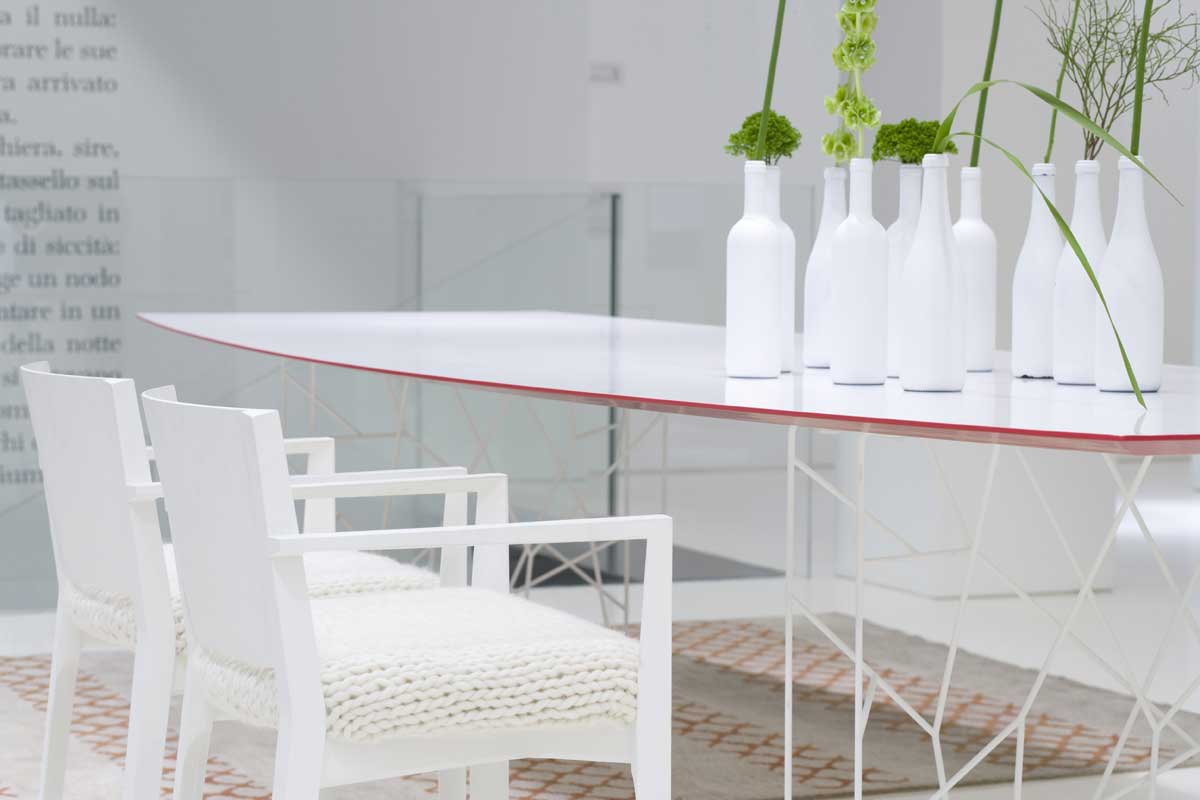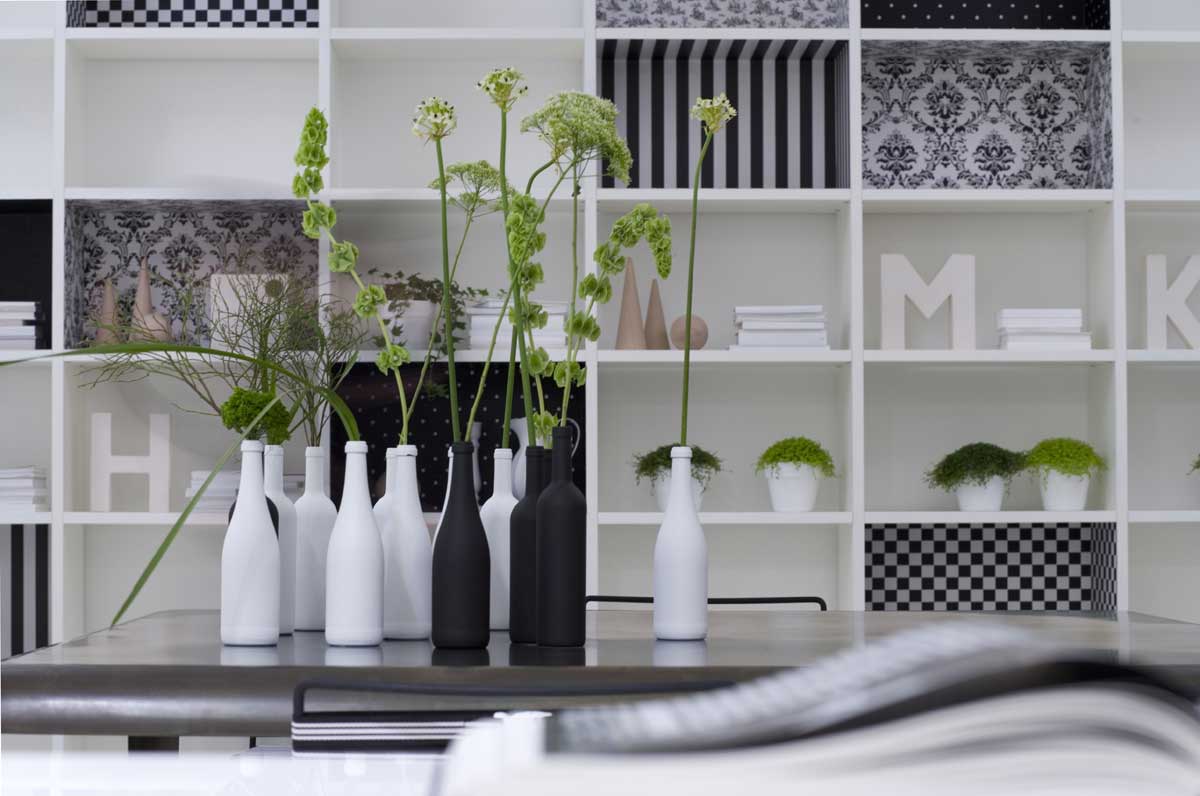Showroom Porro, Via Durini 15
18-23 april 2007
Material House – concept Piero Lissoni, with Elisa Ossino and participation of Maria Porro
In the Material House at the showroom of via Durini 15 in Milan, Porro investigates - almost with a microscope - the properties of matter.
While in past years the company was involved in compositional research aimed at extending its range of action toward new themes and types, it did not, on the other hand, neglect a profound reflection on material.
Simple and natural materials are shrewdly combined with high-tech materials to achieve in each product the high degree of aesthetics and functionality that makes a Porro project unique. Now, through a divertissement of Piero Lissoni, Porro intends to cast light on this hidden side of its research, dedicating to it the entire space of its Milan showroom: an accurate and, at the same time, poetic survey conducted by the designer in co-operation with Elisa Ossino and Maria Porro.
The research and reinterpretation work on the surfaces by Porro is inspired by a literary idea: the final dialogue between the Great Kahn and Marco Polo from "The invisible cities" by Italo Calvino, when Marco Polo, by simply observing a piece of smooth wood, is able to run through its complex existence. The “Material House” is the point of view of Marco Polo, who explores the material, discovers its stratifications, reads its story through the colour and the imperfections. Alternative and highly expressive materials, industrially produced pieces of furniture that become true and proper unique pieces, hand-made finishes or new technologies.
It is a sensitiveness inspired by Burri, Jannis Kounellis and Beuys, with contaminations that show how a pure form can be reinterpreted by an original use of materials.
For the first time, Piero Lissoni and Porro tackle elements that lie beyond their rigorous project experience: new materials such as rough iron, wallpaper and velvet, new chromatic effects and new work techniques, which deform, distort, hammer, and scratch the supports, enriching them with unusual tactile and visual sensations. In a liberating, creative act, industrially mass produced furniture items, free of imperfections, are transformed in their intimate being and enriched by all those errors and occasional particularities which make a hand-made product unique and recognisable. “Material House” was created through rediscovered manual skills: it is a form of 'tampering' in human terms toward industry and mass production, to return from the millimetric precision of the machine to the beauty and poetry of manual imperfection.
The result is a miscellany in the decorative style, between deco and rationalist furniture.
And this is how the modular structure of Modern changes into a game of shapes and colours; the Synapsis table becomes a graphic sign through the use of red and white; the Endless bookcase is covered with wall paper; the Unite D chest of drawers is subjected to "works in progress". And that's not all: the Truffle chair is coloured in face powder pink like an elegant duvet; the Lipla bed changes its suit, selecting an original fabric; the Nouvelle Vague chaise-longue carries traces of cine-film frames; a Load It composition is cracked and aged over ash blue tones.
For once, Piero Lissoni forsakes his architect's tools and changes into a tailor, who patiently makes up his pieces of furniture one by one, freely selecting from a tremendously rich spectrum of personalisation possibilities. It is not an experiment for its own sake, but research aimed at discovering new creative ideas. The result of the operation, a particular series of products in limited quantities: pieces that are numbered and, for some small reason, different from any others on the market. Something to own and collect.




















